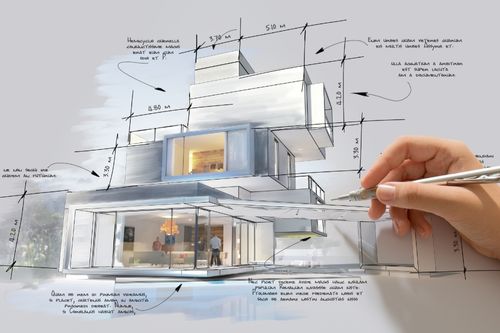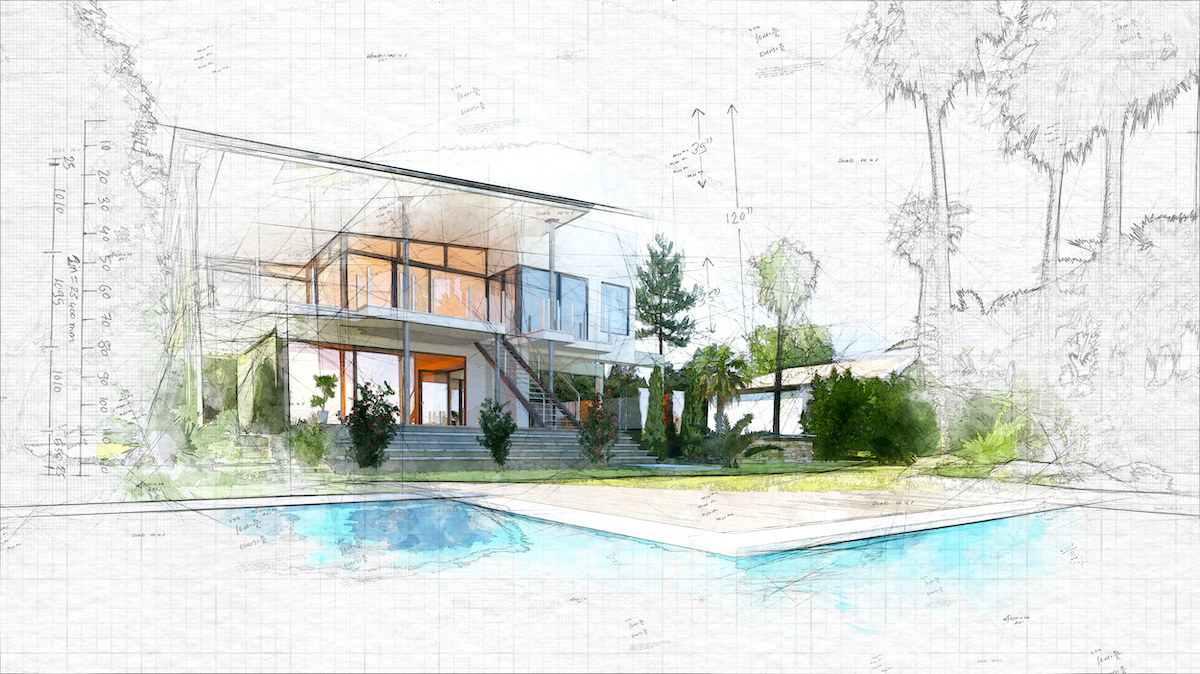The Influence of Technological Innovations on the Layout Practices of Contemporary Architects
The fast advancement of technical devices has significantly reshaped the style landscape for modern architects, promoting unmatched levels of technology and sustainability. The integration of Structure Info Modeling (BIM), parametric design, and expert system has not just structured collaboration amongst varied teams but additionally redefined project implementation. As architects embrace these advancements, they are confronted with intricate obstacles that could impact their imaginative procedures. Discovering these characteristics exposes a nuanced interaction between modern technology and conventional design techniques, triggering a closer assessment of what the future holds for architectural techniques.
Evolution of Architectural Tools
Exactly how have building devices changed the layout and building and construction processes over the centuries? The development of architectural devices has substantially influenced the efficiency, precision, and imagination of design and building and construction.
With the arrival of the Renaissance, the introduction of the compass and the protractor noted a pivotal change. These tools made it possible for architects to achieve greater accuracy in their designs, promoting the emergence of more detailed and proportional structures. The Industrial Revolution additionally changed building exercise with the intro of mechanical tools and materials, permitting larger and a lot more enthusiastic projects.
In the 20th century, the growth of computer-aided design (CAD) software application changed the landscape once more, offering engineers with unmatched capabilities in modeling and visualization. Today, progressed devices such as Building Information Modeling (BIM) and parametric layout software application remain to press the limits of architectural advancement, enabling an extra integrated strategy to layout and building procedures.
Improved Collaboration in Layout
As innovation remains to progress, improved collaboration in layout has come to be a keystone of modern building method. The assimilation of digital tools such as Structure Details Modeling (BIM), cloud-based systems, and progressed visualization software has transformed the way architects, designers, and stakeholders connect throughout the layout process. These tools facilitate real-time interaction, permitting groups to share ideas, modifications, and feedback promptly, no matter geographical area.

In addition, interdisciplinary collaboration has been streamlined through these technical advancements, allowing engineers to function a lot more very closely with various other specialists, such as city planners and environmental specialists. The outcome is a much more cohesive strategy to create that thinks about different perspectives and knowledge. Ultimately, boosted partnership in style is not merely a fad; it is vital for creating cutting-edge, practical, and visually pleasing architecture in a significantly complex globe.
Sustainability Through Technology
Sustainability in style has actually progressively become linked with technical technology, driving the industry toward eco liable techniques - cda architects. Contemporary architects are leveraging advanced innovations to lessen environmental impact while enhancing the efficiency of buildings. One noticeable example is making use of Building Info Modeling (BIM), which permits precise preparation and resource allotment, reducing waste during building and advertising power performance throughout a structure's lifecycle
Moreover, smart materials and energy-efficient systems are being integrated right into layouts to optimize resource usage. Technologies such as solar cells and environment-friendly roof systems harness eco-friendly power sources, adding to minimized carbon footprints. In addition, the application of fabricated intelligence in design procedures enables architects to replicate and analyze energy consumption, guiding decisions toward even more sustainable results.
The assimilation of sustainable technologies not just straightens with global environmental goals but also fulfills a boosting demand from customers for environmentally friendly solutions. As designers welcome these technologies, the focus moves in the direction of producing spaces that are not only cosmetically pleasing yet also functionally sustainable, therefore redefining the standards of contemporary style. In this method, innovation offers as a driver for sustainability, making it possible for architects to design buildings that regard and improve the all-natural environment.
Obstacles in Execution
While technological developments in architecture hold fantastic promise for boosting sustainability, their application commonly comes across considerable difficulties - cda architects. One primary obstacle is the high understanding contour linked with brand-new technologies. Architects and construction experts may call for considerable training to properly use sophisticated software application and devices, which find out can delay job timelines and enhance expenses
In addition, the integration of emerging technologies, such as Building Info Modeling (BIM) and lasting materials, often demands cooperation across multidisciplinary teams. This partnership can be hindered by differences in knowledge, workflows, and communication designs, leading to possible problems and inadequacies.
Financial constraints even more complicate the fostering of innovative innovations. Lots of building companies, specifically smaller ones, may do not have the sources to invest in sophisticated tools, limiting their capacity to take on bigger firms that can manage such financial investments.
Furthermore, governing structures and building regulations might not Extra resources equal technical advancements, creating uncertainty and prospective compliance problems. This difficulty can prevent engineers from totally embracing new technologies, as the risk of non-compliance may exceed the advantages. Consequently, dealing with these application obstacles is critical for the successful integration of technological developments in modern building practices.
Future Patterns in Style
The obstacles related to the implementation of new innovations in design have actually prompted a reevaluation of future fads within the market. As architects navigate issues such as sustainability, urbanization, and social equity, they are increasingly embracing ingenious modern technologies to enhance design effectiveness and environmental performance.
One noticeable fad is the integration of expert system (AI) in the style process. AI devices can evaluate large datasets to educate style choices, boosting both imagination and performance. Building Info Modeling (BIM) proceeds to evolve, enabling real-time cooperation among stakeholders and promoting structured project monitoring.
Sustainable style techniques are also getting momentum, with designers concentrating on adaptive reuse and regenerative style concepts that reduce source consumption and waste. The unification of smart materials and eco-friendly power sources will better enhance the durability of buildings when faced with environment change.

Final Thought
Technological developments have dramatically improved architectural design techniques, facilitating boosted precision, cooperation, and sustainability. The combination of tools such as Structure Info Modeling and parametric design software program, together with man-made intelligence and smart materials, encourages designers to deal with complicated challenges much more effectively.